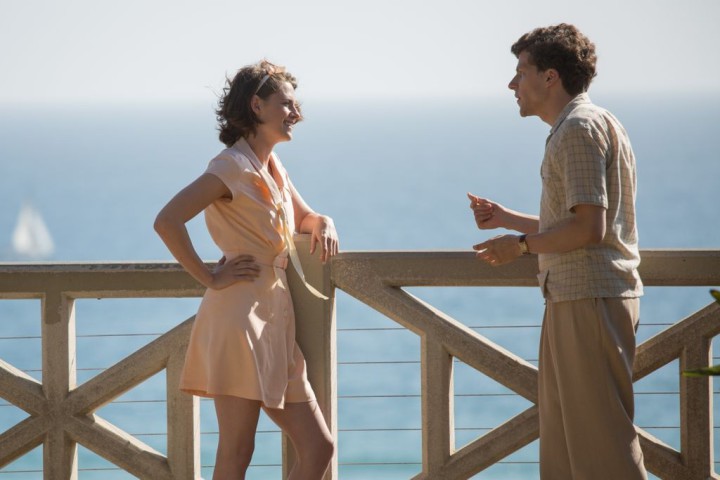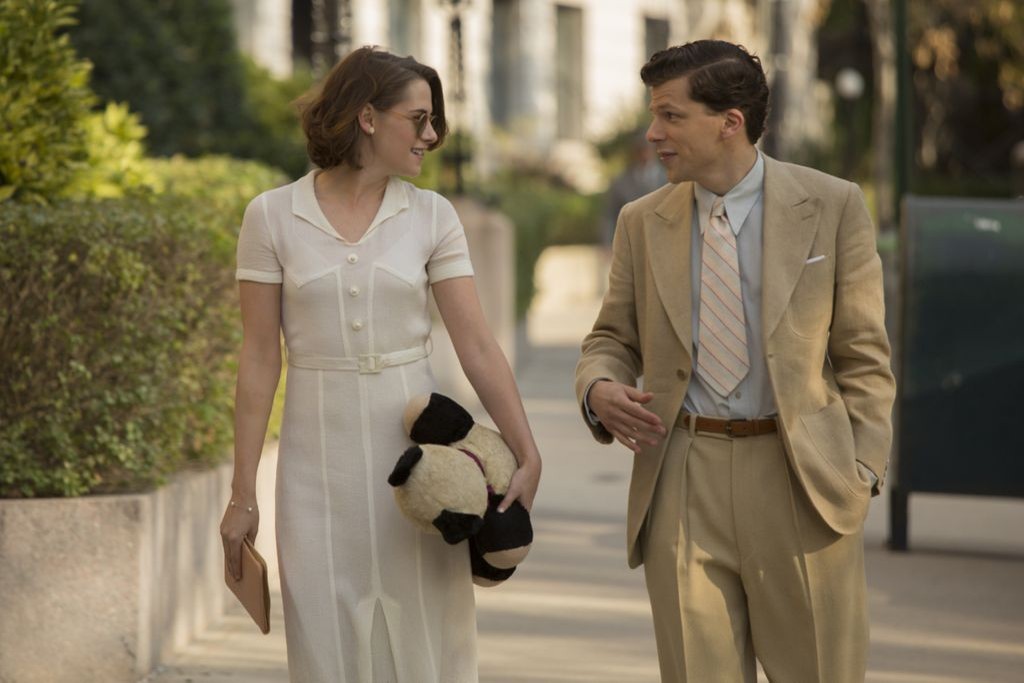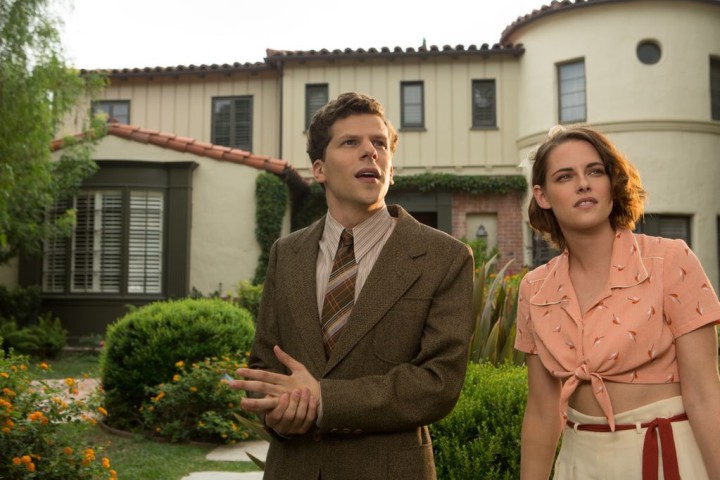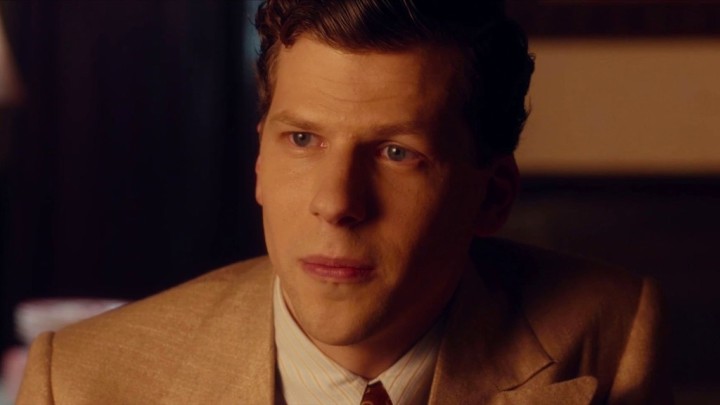My illustrious predecessor had a distinct soft spot for Woody Allen. While I don’t share his unvarnished affinity for the filmmaker’s work, I have always respected it. So, when I say that Cafe Society is definitively second-tier in the context of Allen’s corpus, you can rest assured this is an unbiased assessment. It’s not that Cafe Society is particularly bad. It just isn’t particularly great either. And, for a filmmaker who has turned out a significant number of unquestionable classics over the course of his 50-year career, “not great” can sound like a pretty damning reproach. That being said, second-rate Woody Allen is still better than top-notch for most directors currently working. While it may be essential viewing for only the most ardent Allen completists, Cafe Society is still worth a look for the casual fan as well.

As with most of Allen’s films, Cafe Society is gorgeous to look at. His camera movements maintain a grace and fluidity that has only improved with age, and the lyrical quality evident in his late-period work is on full display here. This is all the more impressive when one considers that this is Allen’s first foray into digital filmmaking, with cinematographer Vittorio Storaro (Apocalypse Now) ably providing an appropriately evocative visual tone for the period setting.
While Allen’s directorial prowess remains largely unassailable, it’s his interest (or lack thereof) in narrative cohesion as a writer that precludes Cafe Society from attaining true greatness. It’s hard to avoid musical comparisons when it comes to Allen’s films, especially in dealing with his late-period resurgence. There’s a looseness to his narrative structure that brings to mind jazz improvisation — and, like some examples of bad jazz, at times it can be too easy to lose the thread that holds everything together. One gets the impression that the director really just had a few scenes in mind and wanted to shoot glamorous golden-age Hollywood, relying on voice-over narration (provided by Allen himself) to cobble these elements into a story after the fact. The meandering narrative leads to significant structural issues, and the film never quite overcomes the obstacle of finding its third-act catharsis. As this is common to most of Allen’s more recent work, dedicated fans prepared to accept the film on its own terms probably won’t take issue, but others are likely to come away mildly frustrated.
As always, Allen is at his best as an actor’s director. The performances he draws out of his cast are impressive, making up for some of the script’s narrative deficiencies. Jesse Eisenberg and Kristen Stewart have an amiable chemistry in their third onscreen pairing, though their rapport occasionally seems a little too relaxed for the relationship they’re depicting. Allen, long fond of his autobiographical proxies, has finally found in Eisenberg an actor who can pull off a portrayal of the director’s tone and mannerisms without devolving into impersonation (looking at you, Scarlett Johansson). Steve Carell continues to push himself in interesting new directions as Eisenberg’s power-broker uncle in an overt homage to Billy Wilder’s The Apartment (although he never quite achieves the sleaze factor that Fred MacMurray attained in that film). I left the theater wishing I had gotten to see more of Parker Posey and suspecting I would’ve rather watched a film focused on the B-plot involving Eisenberg’s gangster brother (played by Corey Stoll). If the worst thing I can say about Cafe Society‘s performances is that I might’ve liked a few to be more heavily featured, that’s a pretty good sign.
Cafe Society is certainly not Allen’s best film, but it’s also far from his worst. With the consistent rapidity of the filmmaker’s recent output, it’s somewhat comforting to be able to reliably expect a new film every year, most of which have ranged from pretty good to outstanding. They may not all be classics, but they fill a valuable counter-programming position in a cinematic landscape littered with superheroes and animated kiddie flicks. Those seeking to fill that Woody Allen-shaped hole in their summer are likely to find Cafe Society a perfect fit. Those without such a need are still likely to enjoy the film as an entertaining diversion. Whichever side of that divide you fall on, you could do worse with your moviegoing time and money. Rated PG-13 for some violence, a drug reference, suggestive material and smoking.
Opens Friday at Fine Arts Theatre







“One gets the impression that the director really just had a few scenes in mind and wanted to shoot glamorous golden-age Hollywood, relying on voice-over narration (provided by Allen himself) to cobble these elements into a story after the fact.”
I felt the same way about “To Rome with Love” (which put me to sleep) and to some extent “Faded Gigalo (which I enjoyed in spite of this). “Cafe Society” was still worth watching, but seemed more appropriate for TV than film. I am reminded of the mini-series “Tribeca” that Robert DeNiro produced back in the 1980s. Three 1-hour shorts, each completely different but with the same ensemble cast, that might have made for a good three-act film except that it would have been too confusing to interlace and would have lasted too long.
Did anyone else notice that Asheville native Paul Schneider was “also starring” in this?
And married to the one and only Parker Posey, no less.
Those are gonna be some beautiful babies!
They would, though their couple struck me as being child-free.